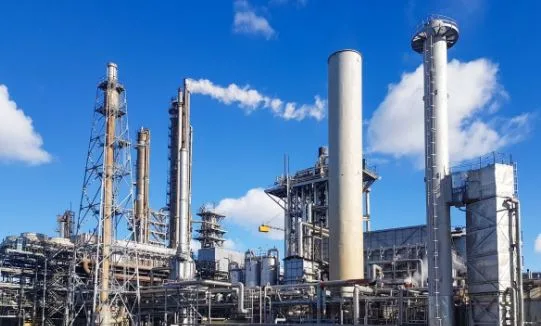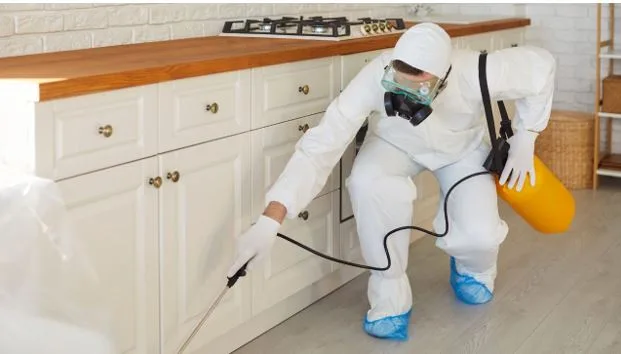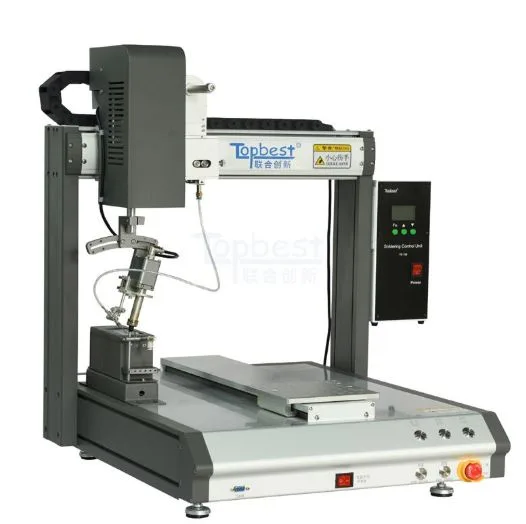How Petrochemical Plants Reduce Energy Costs
Energy expenses represent the largest operational cost for most petrochemical facilities, often accounting for 40-60% of total production costs. With fuel prices fluctuating and margins tightening across the industry, plant managers are looking for proven methods to reduce consumption without compromising output or safety. The challenge lies in identifying where energy is being lost and implementing solutions that deliver measurable returns.
Thermal efficiency in petrochemical operations depends heavily on the performance of process heaters, reformers, and thermal oxidizers. These units operate at extreme temperatures, often exceeding 2000°F, and any degradation in their thermal envelope translates directly to increased fuel consumption. Understanding how heat moves through these systems and where losses occur is the first step toward meaningful cost reduction.
Where Energy Actually Goes in Petrochemical Processing
Process heaters and reformers consume the majority of energy in petrochemical plants because they provide the extreme temperatures needed for chemical reactions. A typical steam reformer, for instance, operates at temperatures between 1400-1800°F, requiring continuous fuel input to maintain reaction conditions. Even small improvements in heat retention at these temperatures can generate significant fuel savings.
Heat escapes industrial furnaces through three mechanisms: radiation, conduction, and convection. Radiant heat loss through furnace walls accounts for a substantial portion of wasted energy, particularly in units with large surface areas. When refractory linings degrade or develop cracks, heat flows more easily to the exterior shell, forcing burners to work harder to maintain internal temperatures.
Thermal cycling compounds these losses. Petrochemical units routinely go through startup and shutdown procedures, and each cycle stresses refractory materials. Over time, this cycling creates hot spots, increases heat transfer to the shell, and reduces the overall thermal efficiency of the system. Specialized refractory solutions for petrochemical applications have been developed to withstand these demanding conditions.
The sulfur compounds and hydrogen-rich environments typical in petrochemical processing also attack conventional refractory materials, accelerating degradation. When materials break down, thermal conductivity increases and insulating properties diminish, creating a direct path for energy waste.
Refractory Systems as the Foundation of Thermal Efficiency
The refractory lining in a petrochemical furnace serves as the primary barrier against heat loss. These engineered materials must withstand chemical attack, thermal shock, and mechanical stress while maintaining their insulating properties. Material selection directly impacts long-term energy consumption.
Low-cement castables have become standard in many petrochemical applications because they resist thermal shock better than traditional refractory concrete. These materials maintain their structural integrity through repeated heating and cooling cycles, preventing the crack formation that leads to energy loss. Dense firebrick provides durability in high-wear areas, while insulating materials behind the hot face reduce conductive heat transfer.
Preventive maintenance of refractory systems pays dividends in energy savings. Regular inspections identify areas of deterioration before they become major heat loss pathways. Small repairs conducted during planned maintenance windows cost far less than emergency shutdowns caused by refractory failure.
Plant operators should watch for several warning signs of refractory degradation. Hot spots visible on the exterior shell indicate compromised insulation. Increased fuel consumption to maintain the same process temperatures suggests declining thermal efficiency. Cracks or spalling in the hot face allow heat to bypass insulating layers. Addressing these issues promptly prevents escalating energy waste.
Companies like Chase Nedrow provide technical guidance on material selection based on specific operating conditions. Their experience with sulfur-resistant linings, carbon-resistant formulations, and materials engineered for hydrogen service helps facilities choose products that maintain thermal performance over extended service lives.
High-Emissivity Coatings Transform Heat Transfer Dynamics
Radiant heat transfer plays a critical role in petrochemical process heaters and reformers. The efficiency of this heat transfer depends on the emissivity of the surfaces involved. Standard refractory materials typically have emissivity values between 0.3 and 0.5, meaning they radiate 30-50% as effectively as an ideal black body.
High-emissivity coatings increase surface emissivity to 0.9 or higher, fundamentally changing how heat moves through the system. When applied to reformer tube walls or process heater radiant sections, these coatings allow the same heat transfer with lower flame temperatures or reduced fuel input. This technology originated in aerospace applications and has been adapted for industrial use.
The impact on fuel consumption can reach 8-15% in properly designed applications. More importantly, the improved heat transfer creates a more uniform temperature distribution across tube surfaces. This uniformity reduces hot spots that can lead to tube failure and extends equipment life.
Process heaters benefit particularly from these coatings because their large radiant sections depend on efficient heat transfer to achieve the desired thermal output. Applying high-emissivity coatings to the refractory walls increases the radiant energy absorbed by process tubes without adding fuel. In reformers, coating the tube walls themselves improves heat absorption from the flame, allowing lower excess air ratios and reduced stack losses.
The coating application process integrates with standard maintenance schedules. Most formulations can be applied during turnarounds using conventional spray equipment. Proper surface preparation ensures adhesion and longevity, with many applications lasting 3-5 years or more, depending on operating conditions.
Operational Practices That Support Energy Efficiency
Even the best refractory systems and coating technologies require operational discipline to deliver maximum savings. Thermal imaging provides valuable diagnostic information about furnace performance. Infrared cameras detect temperature variations on external surfaces that indicate internal hot spots or refractory degradation. Regular thermal surveys help maintenance teams prioritize repairs and track the thermal condition of critical equipment.
Strategic turnaround planning balances production requirements with maintenance needs. Extending run time beyond optimal refractory service life leads to accelerating energy waste. Conversely, premature replacement wastes the remaining useful life of materials. Engineers evaluating material performance can reference documented case studies and technical specifications. Resources like the Chase Nedrow Petrochemical Guide detail verified results from reformers, crackers, and process heaters, including measured efficiency gains, extended run lengths, and fuel reduction percentages that help inform replacement timing and ROI calculations.
Continuous monitoring systems track fuel consumption, stack temperatures, and pressure drops to identify efficiency trends. Establishing baseline measurements after refractory installation or coating application allows operators to quantify performance degradation over time. When fuel consumption increases by 3-5% above baseline, investigation and potential intervention become economically justified.
Training operators to recognize efficiency indicators empowers the entire team to contribute to energy management. Understanding how operating practices affect thermal performance, such as minimizing thermal cycling, maintaining proper draft control, and avoiding flame impingement, helps preserve refractory integrity and coating effectiveness.
Making the Business Case for Efficiency Investments
Energy reduction projects in petrochemical plants must demonstrate financial returns to justify capital allocation. ROI calculations should account for fuel savings over the expected life of the improvement, not just the first year. A refractory upgrade costing $200,000 that saves $80,000 annually in fuel delivers a 2.5-year payback and substantial value over a 5-7 year service life.
The analysis becomes more compelling when considering avoided costs. Improved refractory systems reduce the frequency of emergency repairs and unplanned shutdowns. Better thermal efficiency extends equipment life by reducing thermal stress on tubes and structural components. These factors often equal or exceed the direct fuel savings.
Application specificity matters when evaluating solutions. Steam methane reformers, thermal oxidizers, and sulfur recovery units each present different operating conditions and efficiency opportunities. Materials and coatings proven in one application may not perform optimally in another. Working with suppliers who understand petrochemical processes helps ensure solutions match actual operating conditions.
Integration with existing systems requires careful planning. Refractory upgrades often occur during scheduled turnarounds to minimize production impact. Coating applications coordinate with cleaning and surface preparation requirements. The logistics of material delivery, curing time, and startup procedures all factor into project timelines and costs.
Long-Term Thermal Management Strategy
Sustainable energy cost reduction in petrochemical plants requires viewing thermal efficiency as an ongoing management process rather than a one-time project. Successful facilities implement systematic approaches that include regular assessment, proactive maintenance, and continuous improvement.
Documentation plays an important role. Maintaining detailed records of refractory installations, coating applications, thermal surveys, and fuel consumption creates the data foundation for trend analysis. This information guides future decisions about material selection, maintenance timing, and technology adoption.
The petrochemical industry continues to develop new materials and methods for improving thermal efficiency. Advances in refractory chemistry produce materials with better thermal shock resistance and chemical stability. Coating technologies evolve to withstand increasingly harsh environments. Plants that stay informed about these developments and evaluate them against specific needs position themselves to capture efficiency gains.
Energy costs will remain a dominant factor in petrochemical economics. Facilities that systematically address thermal efficiency through proven materials, advanced coatings, and disciplined operations create durable competitive advantages. The combination of reduced fuel consumption, extended equipment life, and improved reliability delivers value that compounds over time.




